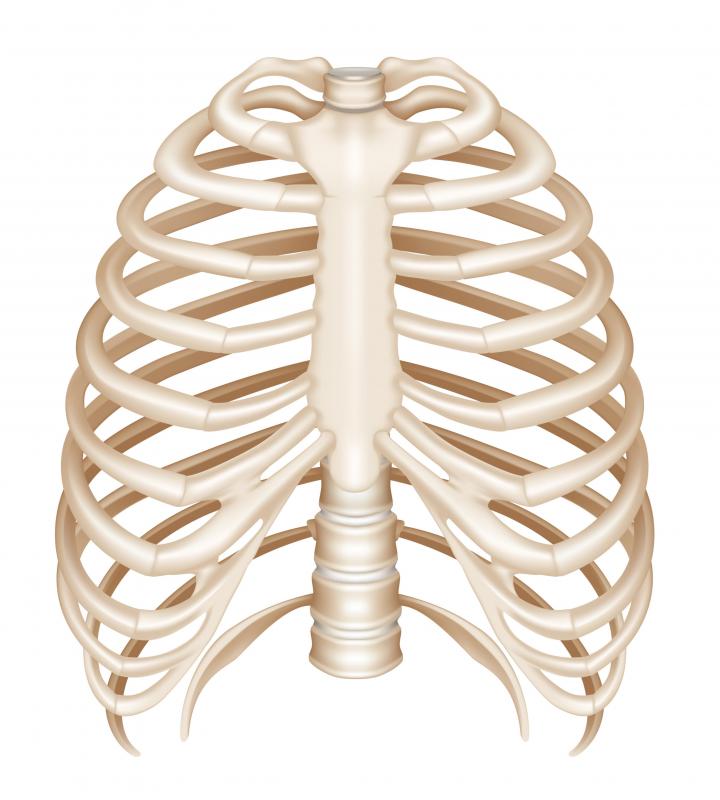At WiseGEEK, we're committed to delivering accurate, trustworthy information. Our expert-authored content is rigorously fact-checked and sourced from credible authorities. Discover how we uphold the highest standards in providing you with reliable knowledge.
What is the Vertebral Column?
The vertebral column is a series of articulated bones known as vertebrae which act as the axis of the body in organisms known as vertebrates. Also known as the spine, the vertebral column is a critical part of the anatomy, serving a number of important functions. In humans, there are some unique features in the vertebral column which are designed to facilitate upright walking. The design of the human pelvis is also very different from that of other animals, reflecting the upright orientation of the body.
Some people are surprised to learn that the number of bones in the vertebral column actually varies, depending on the person. The number is usually between 32 and 34, with several of those bones being fused. The coccyx and sacrum at the base of the vertebral column, for example, are made of groups of bones which have fused together.

At the top of the vertebral column, one finds a special vertebra known as the “atlas.” The atlas supports the skull, with the name being a reference to the mythological figure Atlas, who managed to support the weight of the world. Below the atlas, one finds the cervical or neck vertebrae, followed by the thoracic vertebrae in the midback, and the lumbar vertebrae in the lower spine. Between each pair of vertebrae is a thick, tough, slightly giving layer of material called a disc. The discs articulate the joints, allowing for some flexibility, and they also act as shock absorbers for the spine.

One important function of the vertebral column is to protect the spinal cord, a key component of the central nervous system. The spinal cord consists of a cluster of nerve fibers wrapped in several layers of tough material which act as a sheath. The vertebrae provide further protection from impact, pinching, and other potential sources of trauma.
In the case of the thoracic vertebrae, the spinal column also provides a point of attachment for bones, specifically the ribs. Together, the thoracic vertebrae, ribs, and sternum create a hard protective case of bone to shelter vital organs. Known as the rib cage, the design shelters the heart and lungs from potential trauma.

A number of medical issues can involve the vertebral column, including fractures, scoliosis, kyphosis, slipped discs, herniated discs, hairline cracks, and degenerative diseases such as arthritis. Treatments for these conditions vary, and can include the use of surgery, medications, and physical therapy.
AS FEATURED ON:
AS FEATURED ON:

















Discuss this Article
Post your comments